Western Iowa is one of only two places worldwide with a Loess Hills landform, and the only place that still possesses some of its natural characteristics. Hitchcock Nature Center near Council Bluffs was formed to protect the Loess Hills and to provide low-impact recreation for visitors.
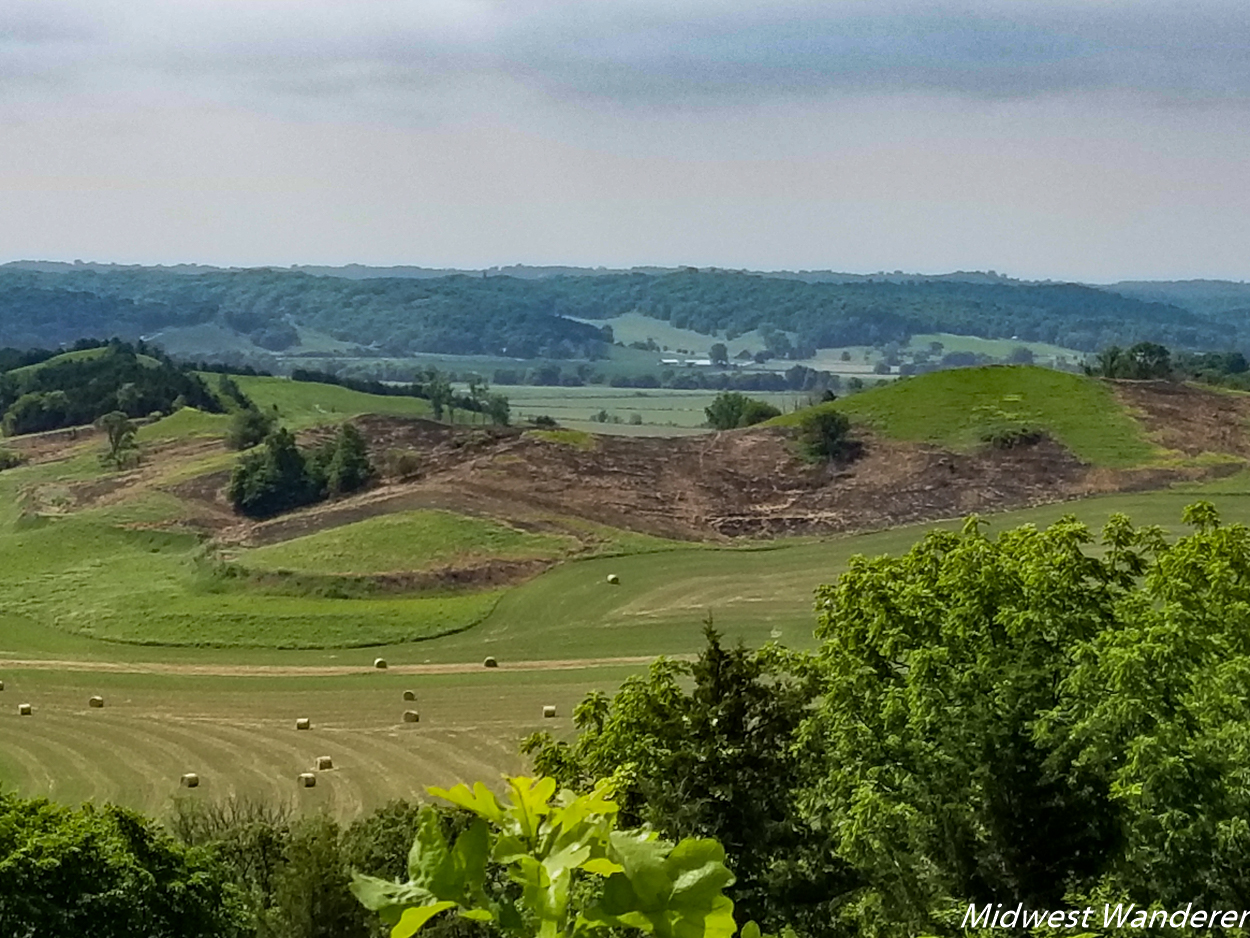
Thank you to Travel Iowa for hosting our visit to Council Bluffs. This article may contain an affiliate link. Read about affiliates in our Privacy Policy.
What are Loess Hills?
The Loess Hills (pronounced luss hills) are made up of silt. The name comes from the German word loess, meaning loose or crumbly. During the ice age, glaciers—some a mile thick—crept through the area pulverizing everything in their path, including bedrock. It turned the rock into a fine powder, called glacial flour.
As the glaciers melted, that powder washed down into the Missouri River Valley. When the land dried, westerly winds swept the silt to the east side of the valley. Over thousands of years, the Loess Hills formed from that silt.
Don’t miss a Midwest Wanderer post. For a FREE subscription, enter your e-mail address in the Subscribe2 box in the upper right and click Subscribe.
The Loess Hills start at the southern tip of South Dakota, run south along the western border of Iowa, and end in northwest Missouri. The hills range from three to fifteen miles wide.
Although loess is located around the world, western Iowa and the Huangtu Plateau in China are the only places where the loess is so deep that it’s considered a landform. However, unlike Iowa’s Loess Hills that still possess some of the natural characteristics, China’s hills are so degraded that they no longer possess any of the natural characteristics. Therefore, Iowa’s Loess Hills are truly significant. However, they were almost ruined in the late 1980s.
How we almost lost the Loess Hills
The YMCA once owned 300 acres of the land which today is part of Pottawatamie County Conservation. They built a lodge in the early 1970s to serve as an overnight camp. When YMCA funding fell short, they sold the land.
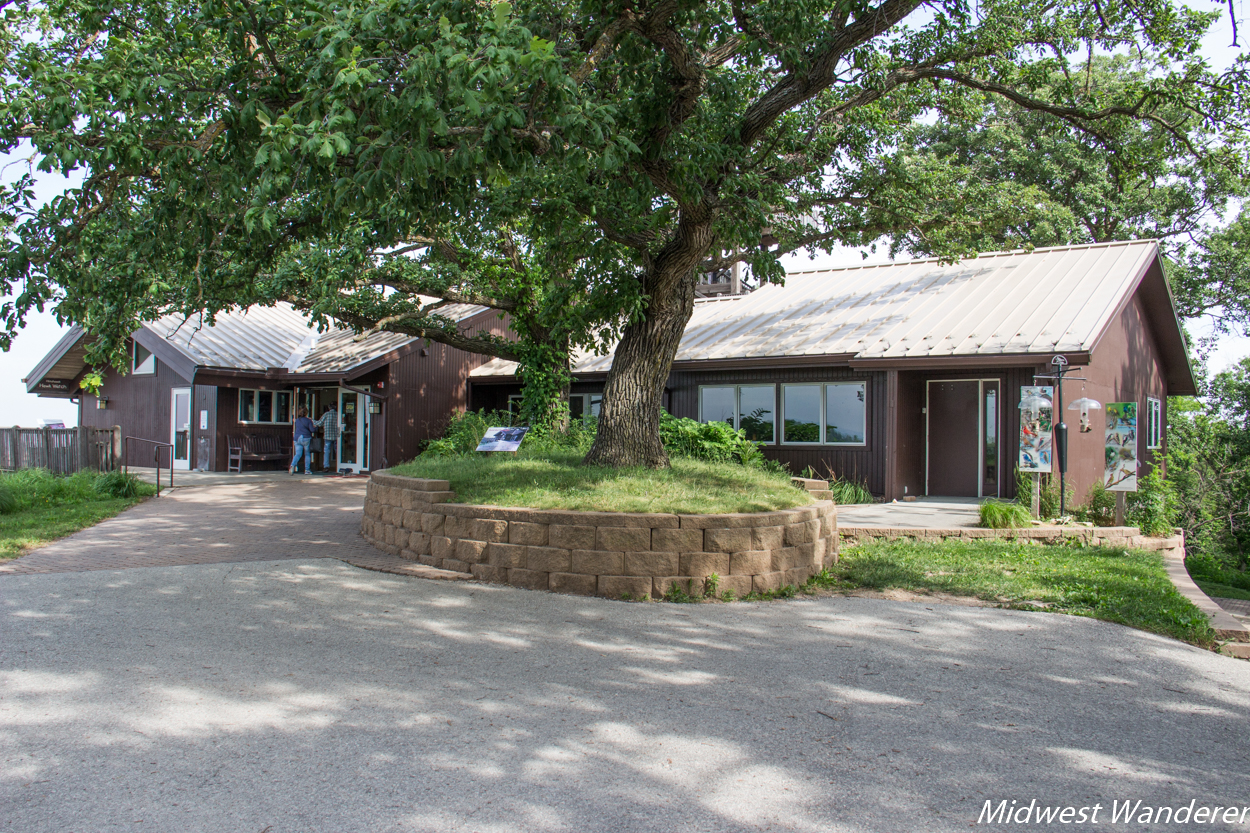
The man who bought the land said he was going to use it for environmental education and perhaps bottle water and start a brewery. In reality, his intention was to turn it into a landfill, bringing in trash from New Jersey and from around the local area. Because the silt that makes up the Loess Hills is highly erodible, when he began to bulldoze the area, the silt began to wash out.
Locals noticed the wash down through the valley into the creek. They found out what he was doing and formed a group called the Dump Busters. They got the EPA and the nature conservancy involved. Although the man followed all the rules to prepare for a landfill, zoning still needed to be changed. When the zoning board voted, the board voted the change down by one vote. The man defaulted on his loans and left town. The county then purchased the land, along with additional land, in order to save the Loess Hills.
Hitchcock Nature Center mission
The three parts of the Hitchcock Nature Center mission are to educate, to provide low-impact recreation, and to provide ecological restoration.
Education
The center offers programs for everyone from young children to adults. School field trips and summer camps are popular for kids. In fact, in 2018 they’re even offering a summer camp for adults, with activities like campfire cooking and night hiking.
Low-impact recreation
Hitchcock Nature Center allows only low-impact recreation, so dirt bikes and horses aren’t allowed. However, they allow camping, from backpack camping to RV camping. They also have camping cabins that don’t have running water but have heat and electricity. Hiking and birding are popular activities. In the fall during raptor migration periods, hawk watching is especially popular. Nineteen different species of raptors migrate through the area. A 40-foot tall tower allows visitors to get closer to raptors.
Ecological restoration
When Lewis and Clark explored the area, most of Iowa was prairie land, including the Loess Hills. Today the Loess Hills are largely wooded and covered with many invasive plant species. Conservation efforts have begun to return the area closer to its natural state. They are removing some of the trees so that sunlight can reach the ground, allowing native plants a better chance to survive. As the Native Americans did centuries ago, they burn the land a portion at a time. Burning also gives native plant species a better chance to survive as regrowth begins.
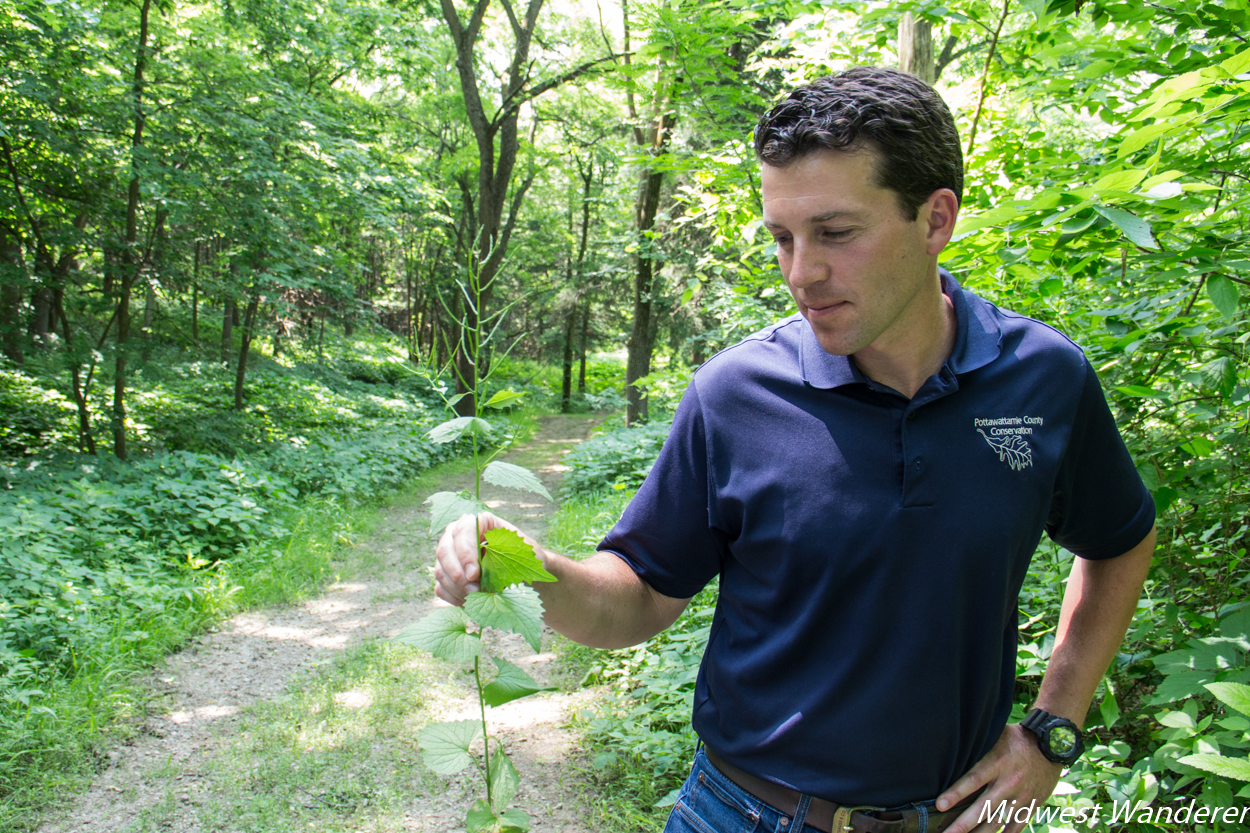
Land without vegetation needs to be treated carefully to avoid erosion. Near the visitor center, which was once the YMCA lodge, permeable pavers cover the ground. The pavers absorb the water then infiltrate it into the ground very slowly.
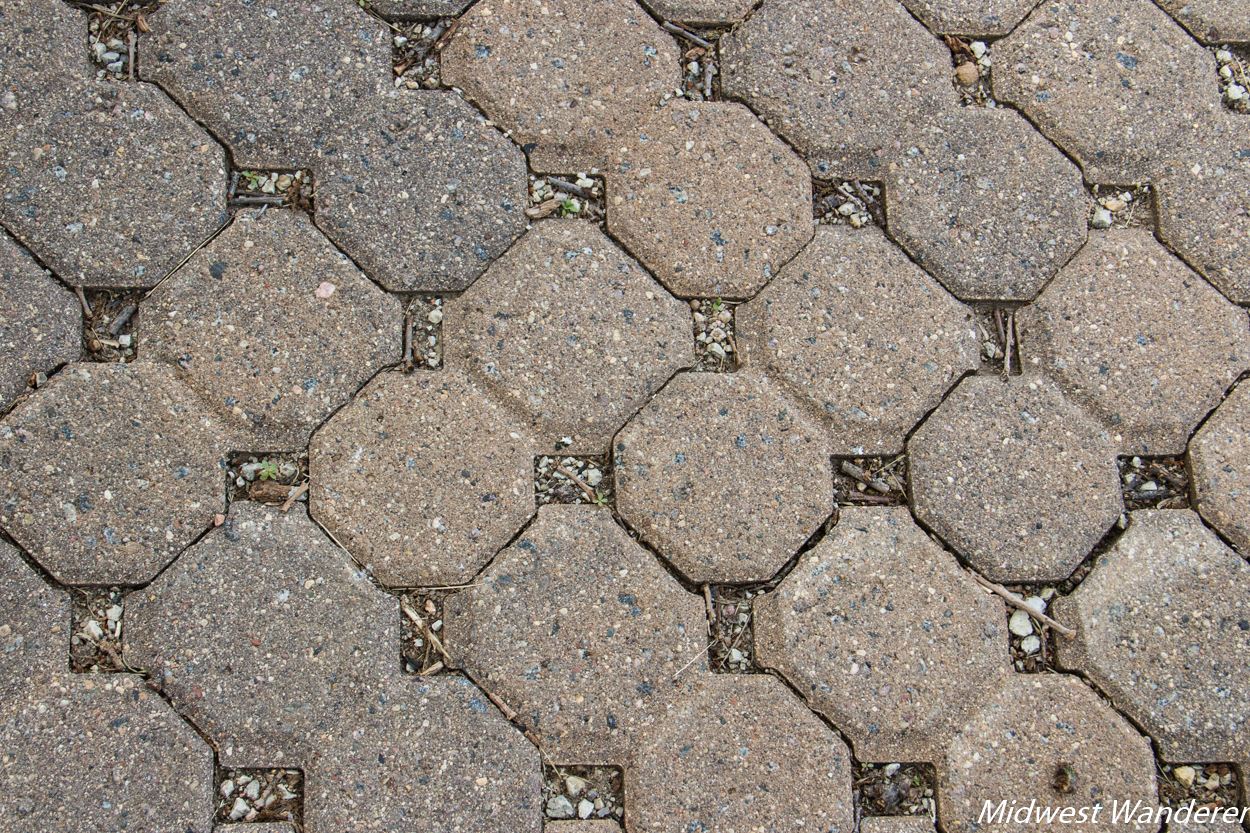
Likewise, on high traffic foot paths, they’ve installed geo webbing and filled it with rock and soil to help hold the loess in place. Jeff Franco, Operations Supervisor, said that without the webbing, ruts would form “that are feet deep.”
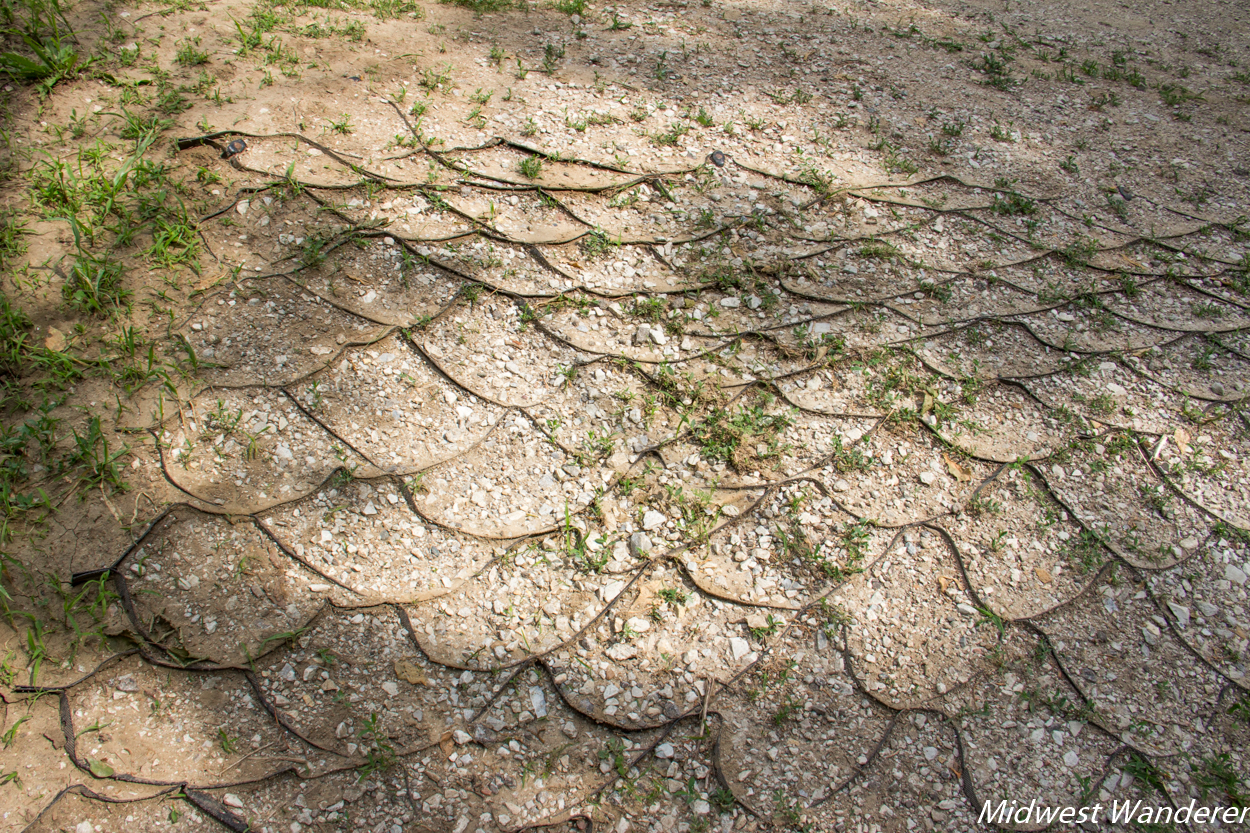
If you visit Hitchcock Nature Center
With continued proper care, the Loess Hills will be returned close to its natural state. Hitchcock Nature Center, through Pottawatamie County Conservation, is determined to meet that goal and keep the Loess Hills that way for years to come.
Hitchcock Nature Center is located at 27792 Ski Hill Loop in Honey Creek, Iowa. Park hours are 6 a.m. to 10 p.m. Admission is $3 per vehicle (exact change). Check the website for other details.
Accommodations: Wondering where to stay on your Council Bluffs visit? We stayed at the Holiday Inn Hotel & Suites Council Bluffs-I-29. There is a walkway from the hotel to the Ameristar Casino. Check rates and reviews on TripAdvisor
Pin It!
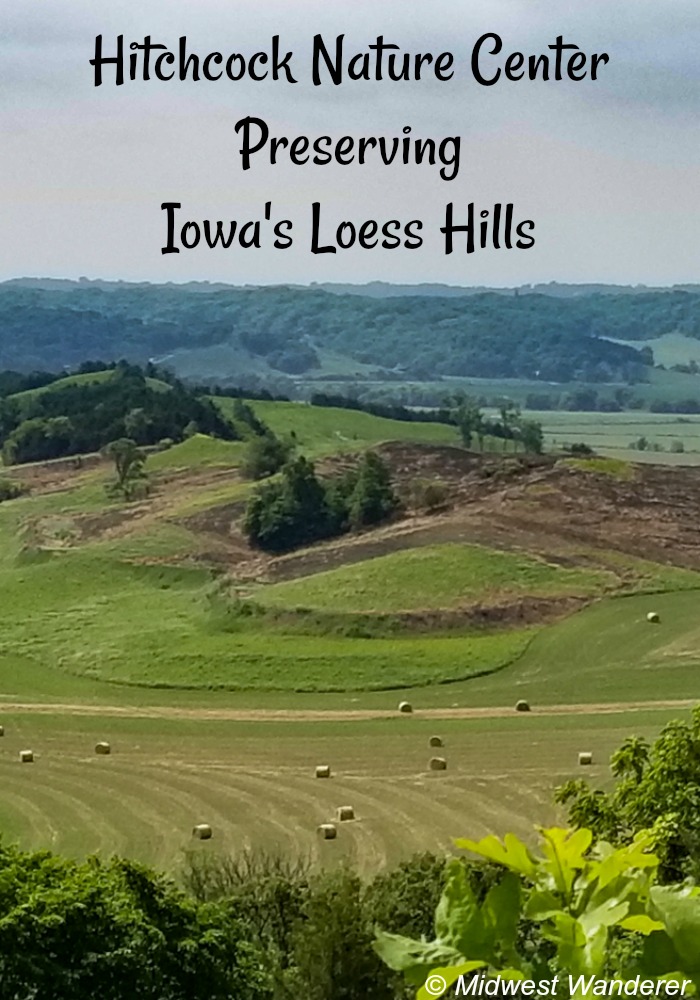
*********
Thank you for reading Midwest Wanderer. Don’t miss a post. Enter your e-mail address below and click Subscribe to be notified whenever I publish another post. Subscription is FREE. After subscribing, be sure to click the link when you get the e-mail asking you to confirm. – Connie
